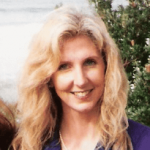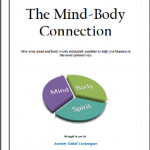What is SAD?
Seasonal Affective Disorder (SAD) is a type of depression and was identified and named by Dr. Norman Rosenthal in 1984.

So it is not something that has been ‘diagnosed’ for very long in medical terms. Dr. Rosenthal began his interest in trying to understand his own bouts with depression during the winter months. Rosenthal proposed the theory that seasonal depression was caused by the lack of light during the winter months.
He found that some people had good mental health through most of the year, but contracted depression easily in the winter months due to a lack of light and found that light therapy helped to alleviate the symptoms. Plus, studies have proven that some people have mood changes when the seasons change.
SAD is a type of depression that occurs at the same time each year, usually beginning in the fall months and continuing through the winter months. Mood changes are prevalent during this time and can turn into a severe case of depression if not addressed.
Challenges of Seniors Suffering from SAD
Extra challenges occur in the winter months among senior citizens – especially those living by themselves. If you’re a senior or the caregiver for a senior, you should know some solutions to the natural change of emotions that cold weather and less sunlight can bring.
The National Alliance for Mental Illness has found that over 6 million American seniors (over the age of 55) are affected by types of depression and that winter can bring new challenges and worsen the emotional effects.
- Walking and driving can become more cumbersome and dangerous for seniors during the winter months and therefore keep them indoors feeling secluded from everyone.
- The renowned Mayo Clinic says that mood changes may be severe when seniors are kept from transportation, caregiver visits and other services during the winter months. Not being able to keep in touch with the outside world can be devastating to seniors who feel isolated and alone.
- Seniors are already prone to mental and emotional problems as they lose loved ones, change lifestyles and living arrangements and are subject to less or fixed income to live on.
It’s important to get a professional diagnosis of SAD so that it can be treated. Depression in older adults often leads to extreme sadness and loss of interest in living.
Symptoms of Seasonal Affective Disorder
Symptoms of SAD mimic that of a normal state of depression, but have some tendencies that are different. Here are some symptoms of SAD that could lead to more chronic forms of depression:
- Fatigue – Sleeping long periods of time and having trouble waking up in the mornings.
- Isolation – Many sufferers of SAD withdraw themselves from family, friends and any type of social activities they once enjoyed.
- Decreased libido – A lack of sex drive is common in both chronic depression and SAD. It can accompany a lack of pleasure for anything that may have once been enjoyed.
- Hopelessness – A profound sense of hopelessness often occurs during a bout with SAD – and can also occur in those with other types of depression (chronic and situational).
- Lack of Appetite or Over-Eating – Some people suffering from SAD have strong craving for foods high in carbohydrates (leading to weight gain) while others experience a decreased appetite.
- Anxiety – Due to their feelings of hopelessness and being tired all the time, SAD sufferers may be anxious about what they are experiencing. When work, relationships and self is neglected, anxiety usually occurs.
Symptoms of SAD are common occurrences in Nordic countries that go through many winter months of darkness. Scientists have found that there may also be a difference in genetic makeup of those who live in some of these countries.
I have an uncle that finds he develops seasonal affective disorder when he visits his family in Scotland.
The exception to the genetic rule is those who live in Iceland and some Canadians of Icelandic descent. It was found that these people eat an inordinate amount of fish, which includes a high content of Vitamin D.
Most SAD symptoms that occur during fall and winter months begin to subside during the sunny days of spring and summer.
As more about SAD is known because of extensive medical and scientific studies, causes of the disorder are becoming clearer. By examining the causes of SAD, treatments are becoming more numerous and effective.
Causes of Seasonal Affective Disorder
It’s important to note that just because a person suffers from lower energy during the winter months doesn’t necessarily mean they have SAD. Low energy is often a natural occurrence during the colder months.
Present day causes of SAD are unknown, but studies indicate that it likely involves a combination of the body’s chemical composition, age and genetics. There are also a few other reasons that may cause a doctor to diagnose Seasonal Affective Disorder. They are:
- Decreased Serotonin Levels – Serotonin is a neurotransmitter produced by the brain that determines moods. If you suffer a decreased level of serotonin in your body, you might also experience depression in some form or other.
- Circadian Rhythm – Your body has an internal timepiece called circadian rhythm which may become disturbed because of decreased levels of sunlight, confusing the body as to whether you should be wide awake or sound asleep. This disruption of the biological clock can also lead to depression symptoms.
- Melatonin – The hormone known as melatonin is a giant factor in regulating your sleep patterns and mood swings. A change in season can upset that natural hormonal flow and cause depression.
- Lack of Sunlight – SAD is definitely more common in people who live in countries where winter days are short and there is an acute lack of sunshine during those cold months.
- Age – Often seniors are found to suffer with SAD.
Studies about causes of SAD are now being gathered and the effects it has on the human body are being linked to other reasons besides lack of sunlight, but low Vitamin D levels are definitely associated with SAD and is a consideration in the diagnosis.
Treatments for Seasonal Affective Disorder
Treatments for SAD vary as much as the causes and symptoms for the disorder. The classic type of SAD that’s associated with winter months and marked lack of sunshine is usually treated by light-therapy, but there are some other treatments that can help.
Seniors with SAD may be prescribed both anti-depressant medications and doses of light therapy. The treatment is usually tried for a while and then another method if one form of treatment doesn’t work. I prefer natural mood-lifting treatments for SAD if possible!
Here are some methods of treatment for SAD and how they work to alleviate the devastating symptoms:
- Light-therapy – A standard treatment of light therapy for SAD includes thirty minutes of 10,000-lux, fluorescent white light that’s diffused. Administering the treatment in the morning seems to help more than later in the day.
Of patients diagnosed with SAD, most fully remitted with light-therapy and regained their lost energy and positive moods. Studies also noted that when light therapy targeted the person’s sleep and wake cycle (biological rhythms), the success rates went up significantly.
- Sunlight exposure outdoors or using a heliostat that is controlled by a computer and reflects sunlight into the home or room can also be used to treat SAD.
- Negative air ionization – A SAD treatment where particles are discharged into the sleep area. The silent device is placed about two or three feet from the head and discharges the negative air ionization particles using a high electron flow.
Apparently this treatment can be effective when enough negative ion density is used. Sometimes, this treatment is given in conjunction with light-therapy which increases its overall effectiveness. Although no one seems to know how the treatment actually works to relieve symptoms of SAD, proponents of the treatment suspect that it helps the production of serotonin in the brain.
- Antidepressants – Some SSRI (selective serotonin reuptake inhibitor) antidepressants are prescribed as SAD treatments and have often been used in conjunction with light-therapy.
- Vitamin D and Melatonin – It’s usually found that Vitamin D levels are low if suffering with Seasonal Affective Disorder. It means the person is not getting enough sun exposure. Be sure you consult with a health care professional before using Vitamin D or melatonin so you don’t take more than is necessary.
- Cognitive Behavior Therapy – This is a natural treatment method for helping people with depression and other anxiety disorders. There are therapists who specialize in cognitive behavior therapy, to work with people and help them find new ways about thinking to improve their moods. This method is being used effectively to treat SAD.
The natural treatments of Vitamin D, Melatonin, light therapy, cognitive-behavior therapy and negative air ionization should be tried in my opinion, before the more addictive treatments of antidepressants. Treatments can also be used in various combinations to find the most effective method for treating SAD.
SAD Treatments For Seniors
Some treatments are available, but here are a few things you can do if you’re a senior or a caregiver to fight the effects of winter depression or SAD.
- Physical activity – Seniors who live in small quarters or have limited access to exercise methods can become depressed because there is a lack of endorphins being produced in the brain. A lack of endorphins can lead to fatigue, anxiety, over-eating and a multitude of other problems.
- Movement, even just stretching, are good ways to add small, but important exercise to the day. Just a few minutes of movement each day can make a world of difference in fighting SAD.
- Let the sunshine in – As much as possible, open blinds and curtains when the sun is shining. Sit in the sun near a window or outdoors during sunny days. The use of a light lamp or Vitamin D supplements might be helpful too.
- Try and get outdoors even on cloudy days for some outdoor activity. Being outside and enjoying fresh air can make a profound difference in a person’s mood.
- Take up a hobby – An indoor hobby can take your mind off loneliness and make you feel that you’ve accomplished something.
- Watch your diet – A well-balanced diet rich in Vitamin D and energy-building ingredients can keep your spirits up and contribute to keeping you healthy during the staid months of winter. Cut down on sweets and high carbohydrate foods and try to eat plenty of fruits and vegetables. If you know me well, I call them ‘anxiety and depression mood foods‘.
The Link Between SAD and Bipolar Disorder
SAD and bipolar disorder have been linked with changes of season – not simply winter months, but spring and summer too. If someone has bipolar disorder they can experience “reverse seasonal affective disorder,” which is a type of mania or hypomania.
Some of the symptoms that could indicate Bipolar Disorder and SAD include:
- Agitation and irritability
- Extremely elevated mood
- Thoughts and speech patterns that run together
- Hyperactivity
- Excitement that’s much more elevated than it should be.
Medical studies indicate that, among SAD sufferers, there could be as much as 20% that have also been diagnosed with bipolar disorder. Treatments are different for those with both bipolar disorder and SAD than those who have only been diagnosed with SAD.
Train Your Mind and Body to Prevent SAD
Experts now know that there are ways to train your mind and body to prevent SAD from taking over your life during certain seasons – usually the winter months. As discussed a lack of sunshine is one of the major cause factors of SAD, so getting the proper amount of vitamin D is imperative. So if you can’t enjoy the sun on your face, perhaps try light therapy and see if you can’t lift those moods!
Affiliate Disclosure
My website contains affiliate links, which means if you purchase any products mentioned in my articles, I may receive a commission. If you do, thank you!






Speak Your Mind